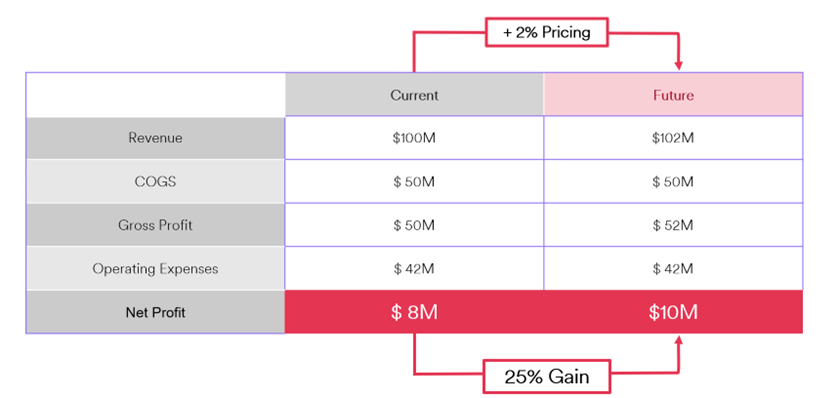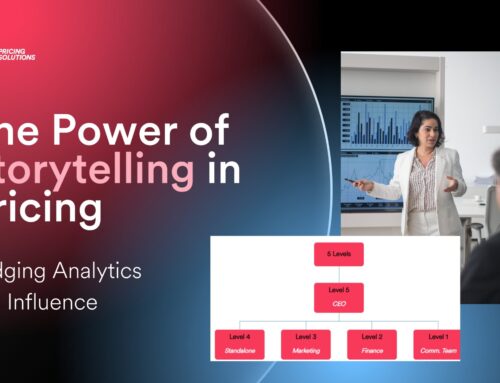Why Take on a Pricing Transformation Initiative…Is the Juice Worth the Squeeze?
By: Roberto Rivera, VP, Pricing Strategy
Many business leaders intuitively understand that disciplined pricing can boost profits. This could involve streamlining pricing processes or empowering the sales team to reduce the need for sharp discounts. However, despite the strong ROI of investing in pricing, there’s a perception that changes to the pricing process are cumbersome and complex. Is the juice worth the squeeze?
What if we told you that with improvements in data analytics and a keen focus on the most impactful pricing drivers, clients have transformed their pricing execution in just 15 weeks? Organizations that have embarked on this journey have not only seen strong financial returns but have also secured the level of internal alignment needed to drive their businesses to the next level. This article will explore the key inputs, processes, and benefits of taking on a Pricing Transformation initiative.
Understanding Pricing Transformation
Over 20+ years of helping clients enhance their pricing capabilities, we often encounter three types of pricing initiatives:
- Pricing & Packaging: Organizations introducing a new solution to the market need clarity on pricing. Depending on the offering’s uniqueness, competition, and market needs, the goal is to structure the offering, determine pricing, and position it against competitors to maximize value capture.
- Pricing Audit & Quick Wins: Before committing to any pricing initiative, organizations want to assess their pricing capabilities, identify key areas of opportunity, and identify actionable recommendations to improve pricing performance. This could involve evaluating policy implementation or delving into sources of price and margin leakage. The goal is to prioritize strategic pricing initiatives and create a pricing roadmap aligned with key organizational goals.
- Pricing Transformation: This is when an organization recognizes that their current pricing structure is inadequate, leading to inconsistent pricing and sub optimal pricing decisions that put a burden on margins and growth. Senior leaders understand that reactive pricing is unsustainable for long-term business success.
By examining the Pricing Transformation challenge, organizations can revamp their pricing processes and gain greater alignment with their business objectives.
Inputs of Pricing Transformation
Starting your pricing transformation requires a deep dive into your invoice or transaction data, to uncover how you are executing pricing today. This data includes the prices charged, quantities sold, and revenue from all sales. Analyzing this data from a pricing best practices perspective can reveal insights that drive exploration, change, and improvement.
For example, we often find that large customers pay higher prices than smaller ones, exposing organizations to risk. Addressing inconsistent pricing is a significant opportunity. With effort and a solid process, you can begin to adjust pricing for smaller customers and roll out a more consistent pricing structure on new deals going forward. This won’t happen overnight, but having a plan is a crucial first step.
The Process of Pricing Transformation
After analyzing your transaction data and confirming the need for a pricing structure, the next step is segmenting customers and products. The goal is to develop a structure where similar customers pay similar prices for similar solutions.
For most clients, the common attribute to define similar customers is size, but size alone is not enough. Within different customer segments, differences in value perception, service dependence, and willingness to invest must be considered. Identifying these attributes is key to developing a segment-driven and value-based pricing strategy that serves as a long-term guide.
You might be interested in Pricing Transformation and Revenue Management Services
Example of Pricing Transformation
We worked with a client on setting up their pricing structure based on pricing power. We identified 25 unique customer and product segments that differed based on pricing power. In the upper left hand corner (Very Low) we put all of their largest and most price sensitive customers buying their most commoditized items. In this top/left microsegment, you would expect to see the lowest margins or higher levels of discounting for the business. However, as you move from left to right and from top to bottom margins improve as pricing power increases. With a structure now in place we could now see how the business was performing relative to the newly established targets.

One of the first comments when we showed this analysis to the client was; “wow, our pricing is like a scrambled Rubic’s cube”. Margins were a bit all over the place regardless of segment. However, with visibility into the ideal pricing structure, the organization began taking action by first targeting those customers that were severely underpriced. Within weeks they started seeing results based on the guidance provided by their newly established north star.
Benefits of Pricing Transformation
Expect significant profitability impacts from effective pricing strategies. A 2-3% improvement in pricing can lead to minimal or no loss in sales volume if executed correctly. This improvement flows directly to the bottom line, resulting in margin improvements of 20% to 30%. It is important to note that these benefits to revenue and margin are not just a one-off. Pricing improvements have a compounding effect that can snowball to deliver results year after year if planned and executed correctly.

Most importantly, developing a pricing structure provides alignment and direction, driving consistency, eliminating complexity, and producing financial results that justify the investment and commitment to pricing transformation.
Our Solution
Through numerous projects across various B2B industries, we’ve witnessed the transformative power of pricing. With the right support, about 15 weeks of focused effort, and a willingness to challenge preconceived notions, your organization can elevate its pricing capabilities to the next level. Good luck!





